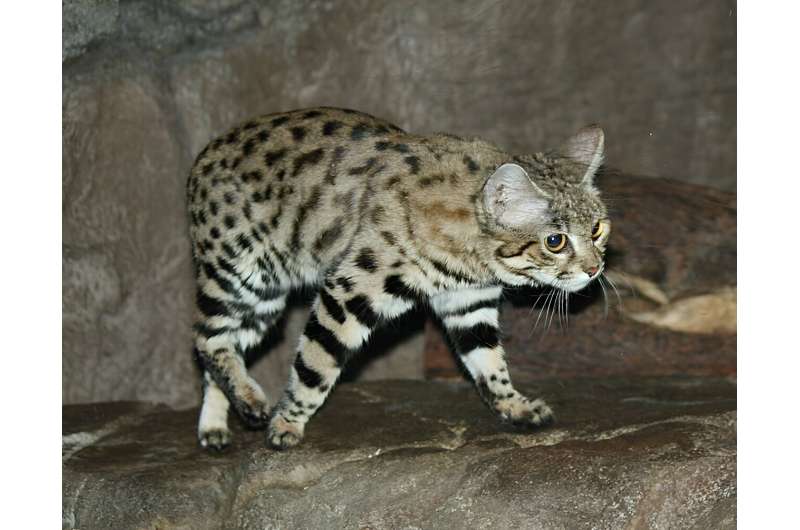January 12, 2024 report
This article has been reviewed according to Science X's editorial process and policies. Editors have highlighted the following attributes while ensuring the content's credibility:
fact-checked
peer-reviewed publication
trusted source
proofread
Inbreeding due to loss of habitat found to be putting black-footed cat in danger of extinction
A large team of life scientists at China's Shaanxi Normal University, working with colleagues from several other institutions in China, one in the U.K. and two in the U.S., has found evidence that the black-footed cat may be in danger of extinction due to loss of habitat. In their study, reported in Proceedings of the National Academy of Sciences, the group obtained tissue samples from 10 of the cats and conducted genomic sequencing to learn about their recent breeding history.
The black-footed cat is one of the smallest of the wild cats, though they are still considered to be one of the deadliest—they have the highest known kill rate. They look very much like house cats, but have flatter ears. They live exclusively in southern African deserts. Prior research has shown that they are nocturnal, which accounts for their large eyes. They also have especially keen hearing, so their inner ear structure comprises approximately a quarter of their skull. They are currently listed as vulnerable by the IUCNRLTS.
Prior research has shown that the cats are prone to amyloidosis—a condition in which protein builds up in the organs, causing organ failure. The condition can also lead to inflammation, particularly in the ears, rendering a cat deaf, which can prevent it from finding prey. Amyloidosis has been linked to inbreeding which is what led the researchers on this new effort to learn more about their breeding history.
The team collected tissue samples from 10 of the cats and used them for genetic sequencing. They then compared the samples with others that have been collected over many years. They found multiple markers indicative of inbreeding. Inbreeding in wild cats is typically associated with reductions in populations and habitat. The team also found what they describe as potentially harmful gene variants associated with amyloidosis.
The research team concludes by noting that black-footed cats have been losing range in Africa due to both road building and the introduction of farms in the areas where they live. Both practices can lead to separating groups of cats from one another, leaving fewer options for breeding.
More information: Jiaqing Yuan et al, The genome of the black-footed cat: Revealing a rich natural history and urgent conservation priorities for small felids, Proceedings of the National Academy of Sciences (2024). DOI: 10.1073/pnas.2310763120
Journal information: Proceedings of the National Academy of Sciences
© 2024 Science X Network






















